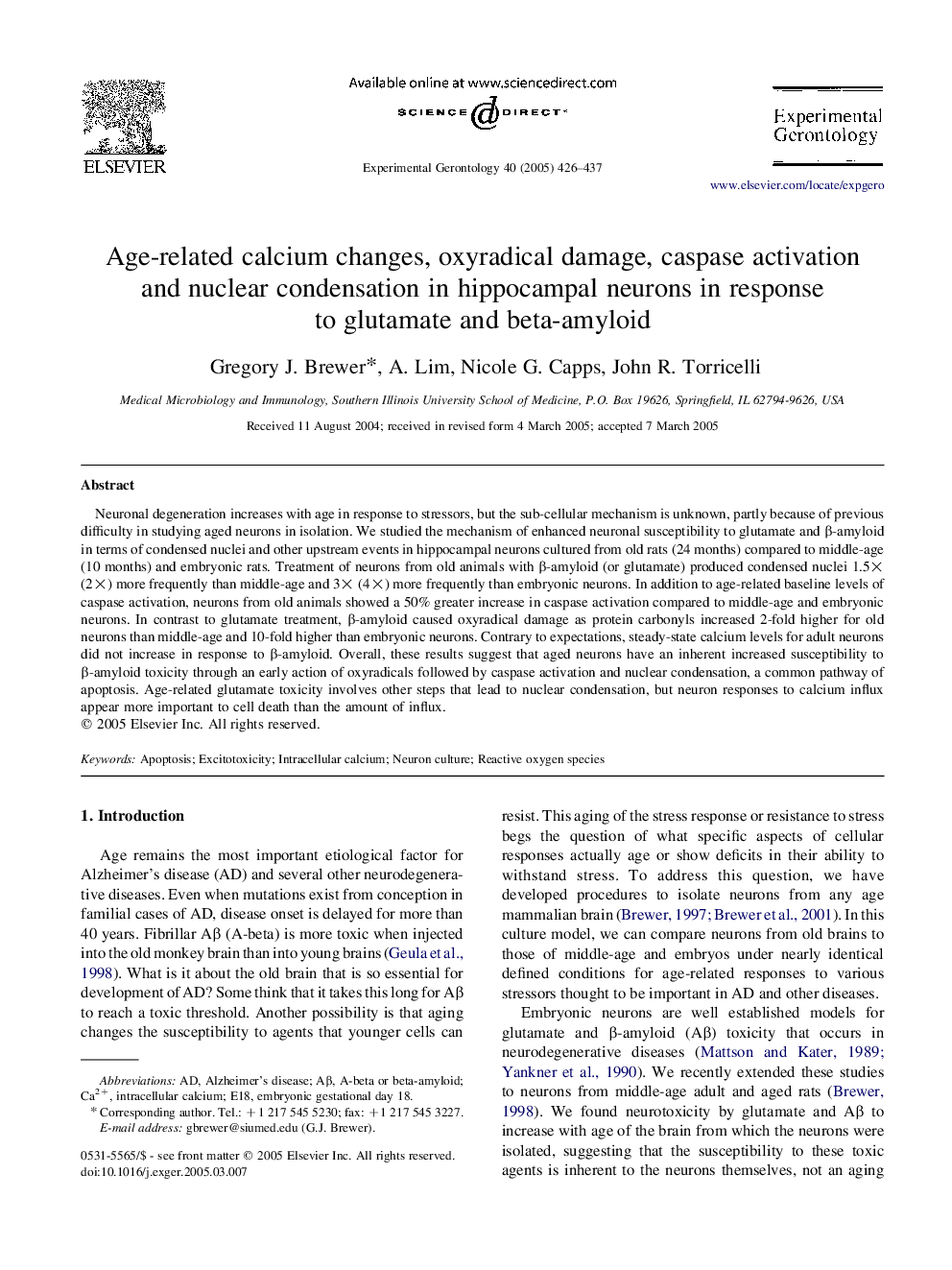| Article ID | Journal | Published Year | Pages | File Type |
|---|---|---|---|---|
| 10737285 | Experimental Gerontology | 2005 | 12 Pages |
Abstract
Neuronal degeneration increases with age in response to stressors, but the sub-cellular mechanism is unknown, partly because of previous difficulty in studying aged neurons in isolation. We studied the mechanism of enhanced neuronal susceptibility to glutamate and β-amyloid in terms of condensed nuclei and other upstream events in hippocampal neurons cultured from old rats (24 months) compared to middle-age (10 months) and embryonic rats. Treatment of neurons from old animals with β-amyloid (or glutamate) produced condensed nuclei 1.5à (2Ã) more frequently than middle-age and 3à (4Ã) more frequently than embryonic neurons. In addition to age-related baseline levels of caspase activation, neurons from old animals showed a 50% greater increase in caspase activation compared to middle-age and embryonic neurons. In contrast to glutamate treatment, β-amyloid caused oxyradical damage as protein carbonyls increased 2-fold higher for old neurons than middle-age and 10-fold higher than embryonic neurons. Contrary to expectations, steady-state calcium levels for adult neurons did not increase in response to β-amyloid. Overall, these results suggest that aged neurons have an inherent increased susceptibility to β-amyloid toxicity through an early action of oxyradicals followed by caspase activation and nuclear condensation, a common pathway of apoptosis. Age-related glutamate toxicity involves other steps that lead to nuclear condensation, but neuron responses to calcium influx appear more important to cell death than the amount of influx.
Keywords
Related Topics
Life Sciences
Biochemistry, Genetics and Molecular Biology
Ageing
Authors
Gregory J. Brewer, A. Lim, Nicole G. Capps, John R. Torricelli,
